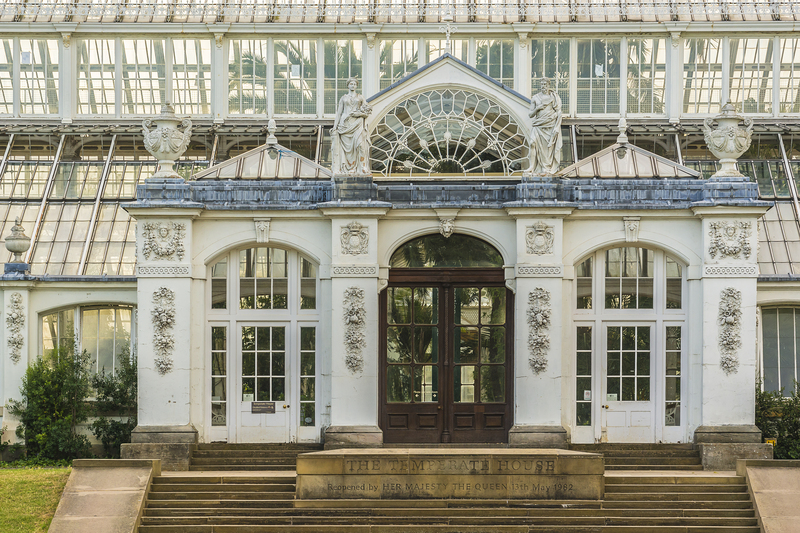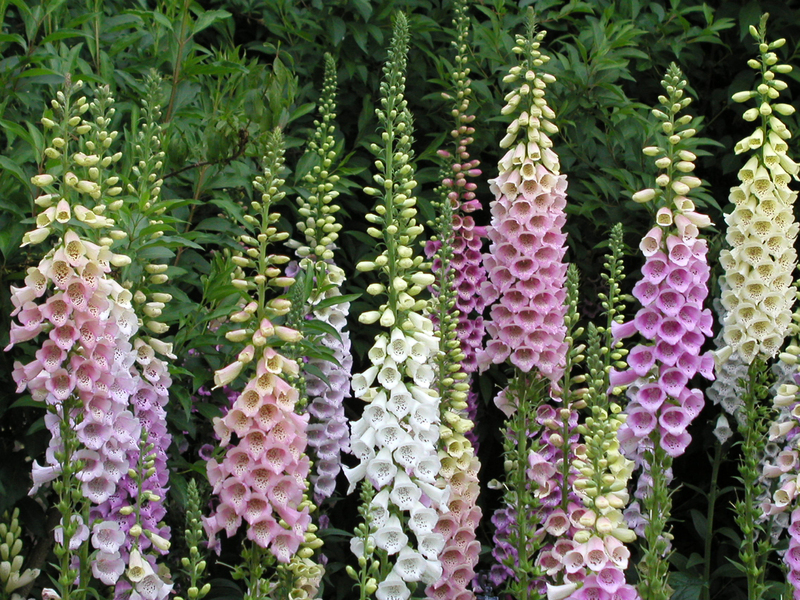Create Your Green Haven: Beginner Tips You Can't Miss
Posted on 29/08/2025
Create Your Green Haven: Beginner Tips You Can't Miss
Are you dreaming of your very own green haven but don't know where to start? Transforming a dull space into a thriving, lush garden sanctuary may seem daunting--but with the right beginner gardening tips, you'll build a private paradise in no time! Whether you want a balcony brimming with color, a backyard oasis, or an indoor botanical retreat, this comprehensive guide covers everything you need to create your green haven from scratch.
Why Creating a Personal Green Haven Matters
Turning a living space into a green sanctuary offers more than just aesthetics. A beautiful, healthy garden can:
- Reduce stress and anxiety
- Boost air quality indoors and out
- Increase your connection with nature
- Encourage outdoor (or mindful indoor) activity
- *Provide fresh produce* if you grow fruits, vegetables, or herbs
- Increase property value and curb appeal
Even a single plant can uplift your mood and invigorate your home. If you're eager to start, these beginner tips are exactly what you need!

1. Assess Your Space and Set Realistic Goals
Every green sanctuary starts with understanding your available space and light. Take time to observe:
- The size and shape of your area (balcony, backyard, windowsill, etc.)
- The direction it faces--is it north, south, east, or west?
- How much light it receives (full sun, partial, full shade)
- The climate and temperature highs/lows
Set your intentions: Do you want a relaxing reading nook among foliage, a vibrant flower bed, or an edible garden? Start small--overambitious plans can feel overwhelming. With clear goals, your personal green haven will flourish.
Expert Tip:
Many new gardeners try to do too much at first. Focus on one corner, bed, or group of pots. As your confidence grows, expand your green space.
2. Choose Beginner-Friendly Plants
Success begins by picking the right plants for your green haven. For newbies, start with resilient, low-maintenance varieties. Consider:
- Succulents (aloe, jade plant, echeverias): Drought-tolerant and virtually fuss-free.
- Herbs (basil, mint, parsley): Easy to grow on windowsills or containers.
- Pothos, spider plants, and snake plants: Thrive indoors with minimal care.
- Marigolds and zinnias: Bright, cheerful, and fast-growing annuals for outdoors.
- Lettuce, radishes, or cherry tomatoes: Great starters for edible gardens!
*Research each plant's sunlight and water needs* before buying. Always group plants with similar requirements together. This maximizes your success and keeps your project simple.
3. Understand Your Soil--The Foundation of Every Green Sanctuary
Healthy plants require healthy roots, and that begins with good-quality soil. Here's how to lay a strong foundation for your personal green haven:
- For outdoor gardens, test your soil with a DIY kit or ask your local garden center. Amend as needed with compost or organic matter.
- For containers, use high-quality potting mix--not regular garden soil, which can compact and suffocate roots.
- Check drainage--standing water leads to root rot. Ensure pots have drainage holes.
- Add mulch to outdoor beds to retain moisture and improve texture.
*The right soil is one of the most important gardening basics you can master* when building your green oasis!
4. Master the Art of Watering
Most beginner gardening mistakes relate to watering--either too much or too little. Follow these tips to find the sweet spot:
- Check soil moisture with your finger before watering. If the top inch feels dry, it's time to water.
- Water deeply, but less frequently, to encourage deep root growth.
- Early morning is the best time to water; avoid wetting leaves at night to prevent disease.
- Container gardens may dry out faster in hot weather; monitor daily in summer.
Pro-tip: Most houseplants and many outdoor varieties prefer to dry out a bit between waterings. Overwatering is far more common and dangerous than under-watering!
5. Plan Your Garden Layout
A well-designed green retreat is both beautiful and practical. When planning your green haven:
- Use a mix of heights--combine tall, medium, and trailing plants for visual interest.
- Place sun-loving species in the brightest spots and shade-lovers under trees, eaves, or inside away from direct sunlight.
- Create pathways or stepping stones if you're working outdoors.
- In containers, odd numbers (e.g., groups of three) are visually appealing.
- Include a cozy seat to enjoy your sanctuary.
*Sketch your ideas before planting to avoid crowding and ensure your design meets your goals.*
6. Use the Right Tools (& Care for Them!)
A few quality tools make gardening smoother:
- Hand trowel: For planting and transplanting
- Pruning shears: To keep plants tidy
- Watering can or hose: With a gentle spray head
- Garden gloves: Protect your hands and prevent blisters
- Soil scoop and rake: Handy for outdoor beds
*Clean tools after use* to prevent rust and plant disease--this small habit keeps your green haven healthy for years!
7. Feed Your Plants Properly
Plants, like people, need food! A balanced approach to fertilizing ensures lush, vigorous growth:
- Choose the right fertilizer (organic or synthetic) depending on your plants' needs.
- Feed during the active growth period (usually spring and summer).
- Use diluted liquid feed for houseplants to avoid over-fertilizing.
- Compost is a fantastic, natural way to boost beds and borders.
Always read instructions and avoid the "more is better" mindset--overfeeding can damage roots!
8. Learn to Prune and Deadhead
Pruning and deadheading are essential for lush, thriving retreats:
- Remove dead or yellowing leaves regularly to keep plants healthy.
- Deadhead (snip off spent flowers) to encourage new blooms during the season.
- Prune leggy growth to maintain bushy, compact shapes.
- Use clean, sharp shears to make neat cuts and avoid spreading disease.
Don't be afraid to trim--most plants benefit from a little haircut now and then!
9. Control Pests the Eco-Friendly Way
Pests can threaten even the best-planned green sanctuaries. Here's how to tackle problems without harsh chemicals:
- Regularly inspect leaves and stems; act at the first sign of trouble.
- Remove pests by hand or spray with water for soft-bodied insects.
- Use insecticidal soap or Neem oil for persistent problems (safe for most plants).
- Encourage beneficial insects like ladybugs, lacewings, and bees.
- Keep your garden clean--dead leaves and debris harbor pests.
Choosing natural methods protects both your green haven and the environment.
10. Stay Consistent--Create a Green Haven Routine
The secret to a lush green space? Consistency! Set simple habits:
- Water on a schedule based on your plants' needs and seasons
- Inspect for pests or signs of disease weekly
- Prune and deadhead as needed
- Feed and fertilize every 4 weeks in season
- Make time to simply relax and enjoy your thriving sanctuary!
*Even spending just 10-15 minutes a day with your plants can make a world of difference* in your indoor jungle or outdoor paradise.
Design Ideas for Your Personal Green Sanctuary
Small Space Green Havens
- *Vertical gardens:* Use wall-mounted planters or hanging pots for apartment balconies or compact yards.
- *Windowsill herb garden:* Perfect for kitchens with limited space.
- *Tiered plant stands:* Create the illusion of depth and variety.
Inviting Outdoor Retreats
- *Garden benches or swings* surrounded by fragrant jasmine or lavender.
- *Water features*: Even a mini-fountain brings tranquility.
- *Lighting:* Solar fairy lights or lanterns create magic after dark.
Indoor Green Oasis
- Mix and match leaf shapes and sizes for drama--think palms, ferns, and broad-leaf plants.
- Group plants in attractive baskets or on decorative shelves.
- Include an essential oil diffuser for a spa-like feel.
Overcoming Common Beginner Gardening Challenges
- Lack of sunlight: Choose shade-tolerant plants or invest in inexpensive grow lights.
- Brown thumb worries: Start with super-resilient species--it's all about learning from experience.
- Limited time: Focus on low-maintenance plants and simple routines.
- Pest invasion: Prevention is key--cleanliness and early action keep problems at bay.
Remember, every gardener has setbacks. The most important tip is not to give up--gardening is a journey of fun, learning, and occasionally, surprises!

Resources for New Gardeners
- Local garden centers--staff are often happy to offer advice for your region.
- Online forums (like Reddit's r/gardening or GardenWeb).
- Apps for plant identification and care schedules (e.g., PlantIn, GardenAnswers).
- Community gardens--great places to learn and meet fellow green thumbs.
- Library or bookstores: Classic guides and design inspiration galore!
Conclusion: Embrace Your Role as a Green Haven Creator
*With these essential beginner tips, anyone can create a unique and flourishing green haven.* Start modestly, observe and care for your plants, and watch as your sanctuary grows--inside or out. The benefits will enrich your spirit, your health, and your living space every day.
Your green haven is waiting--grab your trowel, choose your first plant, and let the adventure begin!

